Home » Grouse Species » Prairie Chicken Hunting » How to Identify the Difference in Prairie Grouse on the Hunt
How to Identify the Difference in Prairie Grouse on the Hunt
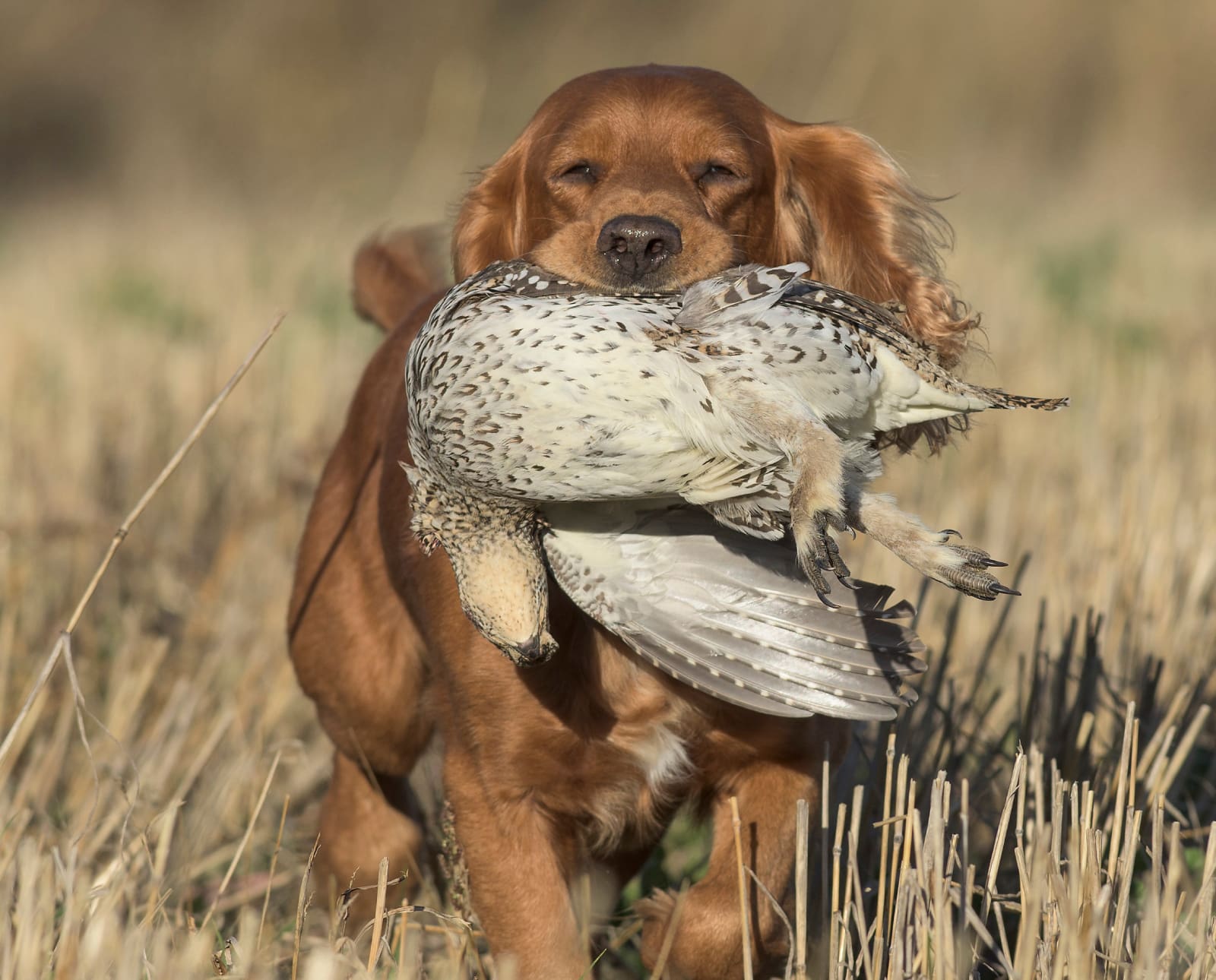
Frank Loncarich has been a wildlife biologist for over 20…
Raised in the upland bird mecca of Kansas, the passion…
Ways to differentiate prairie chickens and sharp-tailed grouse both in the field and in the hand
There are several locations where hunters can experience a multi-species outing in one day. Sometimes, hunters encounter multiple species in a single field. Pheasants and bobwhite quail are frequently placed in the same game bag during a single walk. Woodcock and ruffed grouse are probably the most common combination. But there is one combination that I have always found intriguing: greater prairie chickens and sharp-tailed grouse. Not only can these two species be harvested in the same hunt, but they can be harvested in the same covey flush.
Listen to more articles on Apple | Google | Spotify | Audible
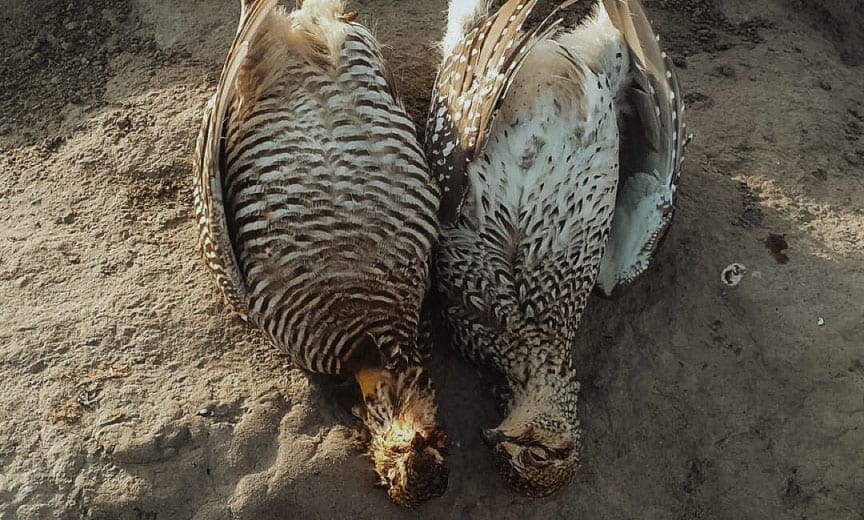
Overlaps of Prairie Chicken and Sharp-tailed Grouse Habitat
These two prairie grouse occupy nearly identical habitat and have many of the same behaviors. Both species prefer wide open grasslands and prairies. Prairie grouse call large, treeless landscapes found across the midwest home. Sharp-tails are found across a much wider range than their prairie chicken cousins. Sharp-tails extend east into Minnesota and Michigan, north into central Canada, west into Montana and Idaho, and south into Nebraska and Colorado. Prairie chickens used to have a large range across much of the Midwest, but they are relegated to a much smaller range due to habitat loss. These days, greater prairie chickens are reduced to Kansas, Colorado, Nebraska, South Dakota, and North Dakota.
Loss of prairie chicken habitat limits the possibility of an outing where hunters might encounter both species down to Nebraska, Colorado, or the Dakotas. Nebraska and South Dakota represent the best opportunity for intentionally pursuing both species in a single hunt, as these two states represent the absolute center of the range overlap.
Physical Characteristics of Sharp-tailed Grouse and Prairie Chickens
Both birds are shaped like a football and are nearly the same size as a pigskin. Beyond that, they have little resemblance to one another. Chickens have a barred chest and a tail that fans out in flight. Their tail appears somewhat squared off when flying, making this the most noticeable difference for a hunter when shouldering a shotgun after a bird flushes. Sharp-tails have a teardrop pattern on their breast feathers and a pointed tail, true to their name. Additionally, prairie chickens appear darker, mostly brown in flight, whereas sharp-tails appear somewhat grey due to their lighter-colored underside.
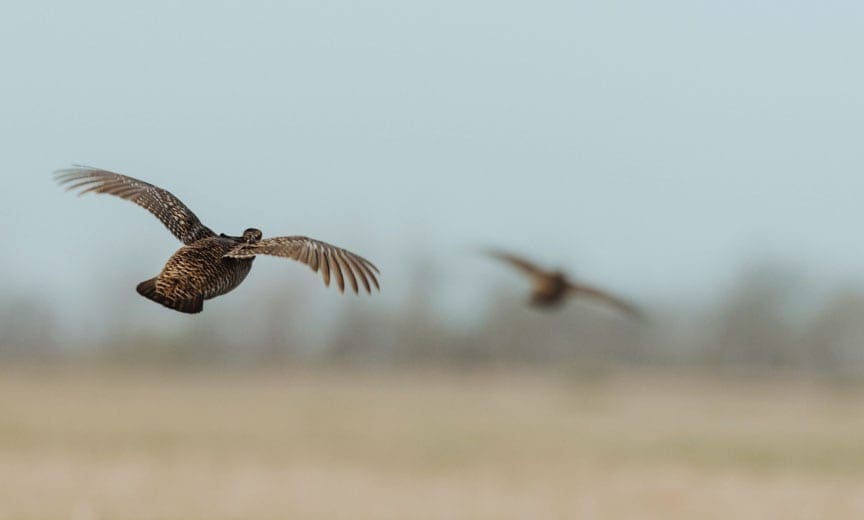
Both species have feathered feet, unlike pheasants or quail. However, prairie chickens feathering is light brown and stops short of their toes, exposing yellowish scales. Sharpies have feathers down their entire feet and toes, and these feathers are mostly white. Males of both species have inflatable air sacs on the sides of their necks. These sacs are used during their booming display in spring. Male greater prairie chickens’ air sacs are yellow to orange in color, whereas sharp-tails air sacs are light purple.

Prairie Chicken and Sharp-tailed Grouse Habitat and Hunting
The seasons for these species are usually simultaneous, and the bag limit is an aggregate of either species in the states with robust populations of both prairie chickens and sharp-tails. Those seasons typically open in September, offering hunters an opportunity to pursue smaller family groups, even some singles and pairs. Early season outings mostly occur in the wide-open grasslands in somewhat arid environments. Prairie grouse prefer vegetation around 15 to 18 inches tall, which allows them to see approaching danger. This vegetation height is typically found on ridgetops, which coincides with where their spring leks are located.
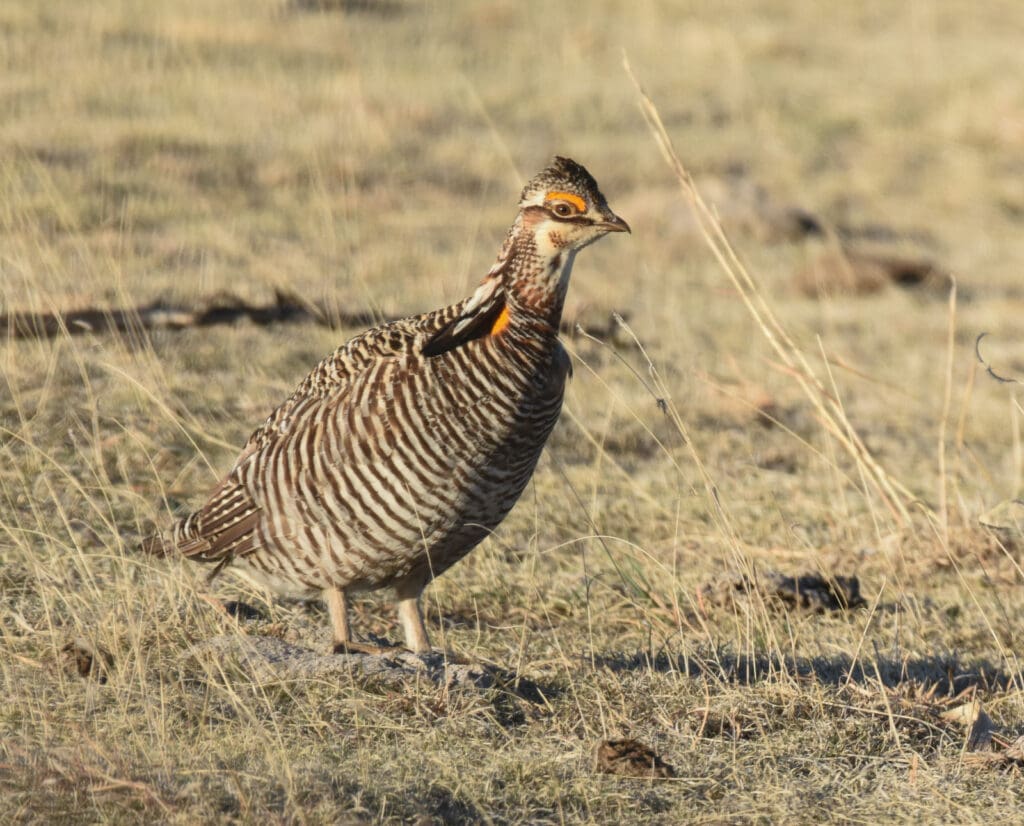
Both chickens and sharpies have a complicated hierarchy system that plays out throughout the year. Birds often gather at leks, even in September. Leks are typically located on ridgetops, which aids in projecting their calling during their spring display. Hunting ridgetops during the early season will usually result in some bird contacts. Large, wide flats of native rangeland on sandy soils with a diversity of broadleaf weeds that attract grasshoppers are also ideal locations for early-season birds since they will continue to eat grasshoppers until the first killing frost.
Another similarity chickens and sharpies share is their affinity for alfalfa. Alfalfa fields are typically riddled with insects, which provides a buffet for early fall birds. Additionally, both species will eat alfalfa leaves as they prefer some greens in their diet. Hunting within or around the perimeter of alfalfa fields is a great strategy to employ during the early fall season.
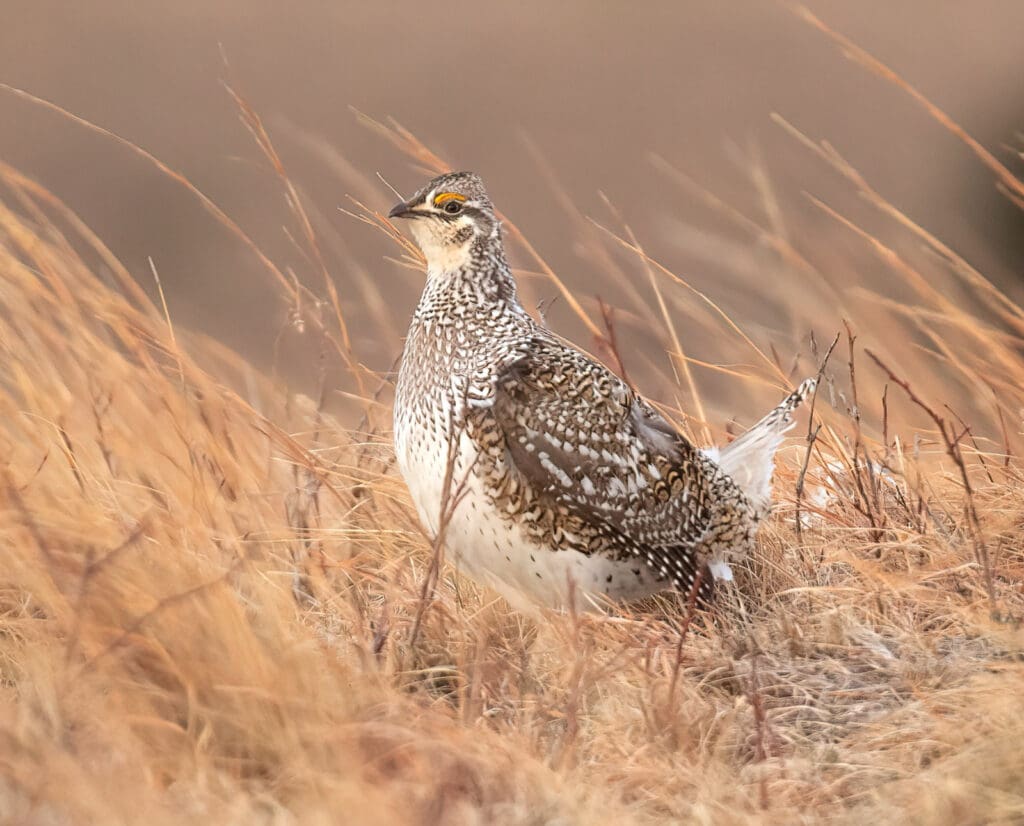
While both species prefer open grasslands, sharp-tails are much more likely to be found in or near brush clumps or tree rows than prairie chickens. One of the best ways to target sharp-tails during the mid-day period is to hunt brush clumps along the sides or bottoms of draws, called coulees in the west. These brush clumps are a mix of buffalo prairie and snowberry and are found at the northern periphery of the prairie chicken range, so if you are hunting where these shrubby clumps are common, expect few chickens anyway.
Both chickens and sharpies will use crop fields and waste grain throughout the season. As the season progresses and insects are no longer available, both species will rely on crop fields for daily feedings. However, prairie chickens often develop an extremely consistent routine. They will fly into a field to field at nearly the exact same time each morning, and their flight path will remain constant for several days. Hunters often pattern these daily flights and wait within the flight path, pass shooting the chickens as they fly overhead. Sharp-tails are not known for this consistent crop field feeding behavior. Rather, they tend to utilize various areas of a crop field, sometimes scattering into several smaller groups while feeding.
Another key difference I’ve noticed while hunting in areas with both species is that sharpies are much more likely to vocalize while in flight. When flushed as a single or a group, sharp-tails nearly always make a “chuckling” or “giggling” type call. I knew of one long-time sharp-tail hunter who used decoys and “chuckled” to birds in flight to call them close. It worked like decoying ducks if you can imagine that! Greater prairie chickens will also call during flight, but much more infrequently. While not 100 percent foolproof, if flushed birds are vocalizing, especially several in a flock, you can be pretty sure they are sharpies.
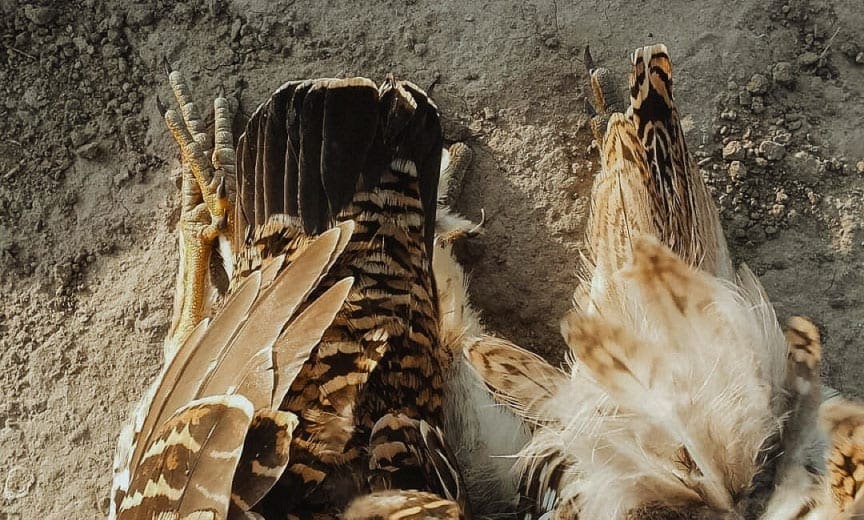
Sharp-tail and Prairie Chicken Shotgunning Tips
Since both species are similar in size, they can both be successfully harvested with the same shotgun gauges, shot size, and chokes. Twelve and twenty gauges are the preferred shotguns. Carrying a lighter model will make long walks more tolerable. Neither species are exceptionally tough to bring down, so I like to shoot 6s for the increased pellet count. Early in the season, an improved cylinder shotgun choke is typically adequate, but as the fall progresses, both species tend to form larger groups. These larger groups are spookier, resulting in longer flushes, so modified chokes are preferred.
For hunters who have spent years in the Midwest pursuing both species, it’s not hard to understand why prairie grouse commonly appear on other hunters’ life lists. Early season opportunities allow hunters to get a head start on upland hunting while they anxiously await the opening of pheasant and quail seasons. The birds reside in some of the most beautiful, wide-open grasslands left in the country. But more importantly, they offer hunters a unique opportunity to experience a multi-species hunt of two iconic prairie species, two species that represent what was once the open plains that seemingly extended forever just a couple hundred years ago.
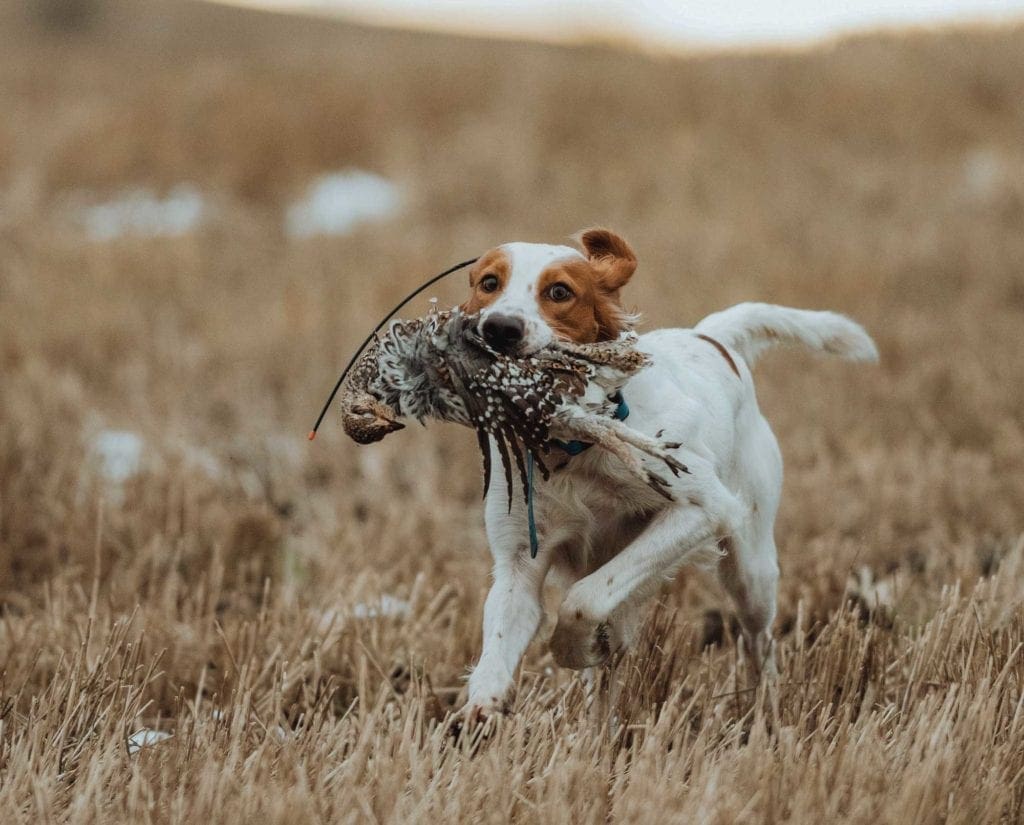
Frank Loncarich has been a wildlife biologist for over 20 years, specializing in bobwhite and grassland management. He is also a Habitat Consultant for Land and Legacy.
Raised in the upland bird mecca of Kansas, the passion for upland birds was born at a young age for Kyle Hedges. He has now spent over 25 years managing upland game habitat on public lands in Kansas and Missouri for State Conservation Agencies. He also works as a Habitat Consultant for Land and Legacy, assisting landowners across the country with improving their properties.




Thanks for the recommendation Joe. e actually have some biologists checking it out and adjusting some the habitat information. User feedback is hugely important to our work so please keep it coming!
Exactly what I was looking for! Great info.
That’s great to hear. Please be aware that this article was more for hunting sharpies and chickens in the open prairie. Sharpies can be fond in more diverse habitats. Good luck and keep us posted on how you do.